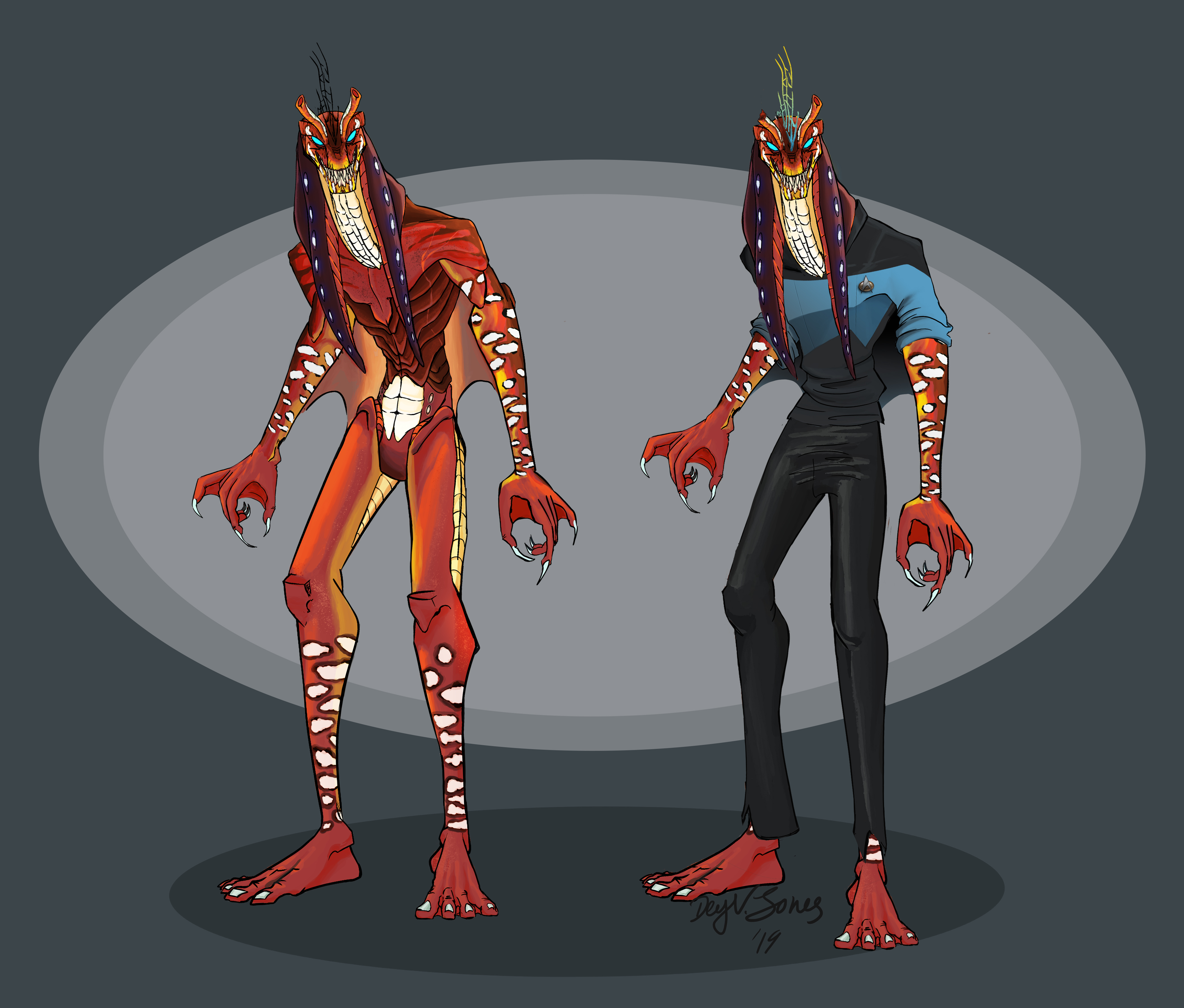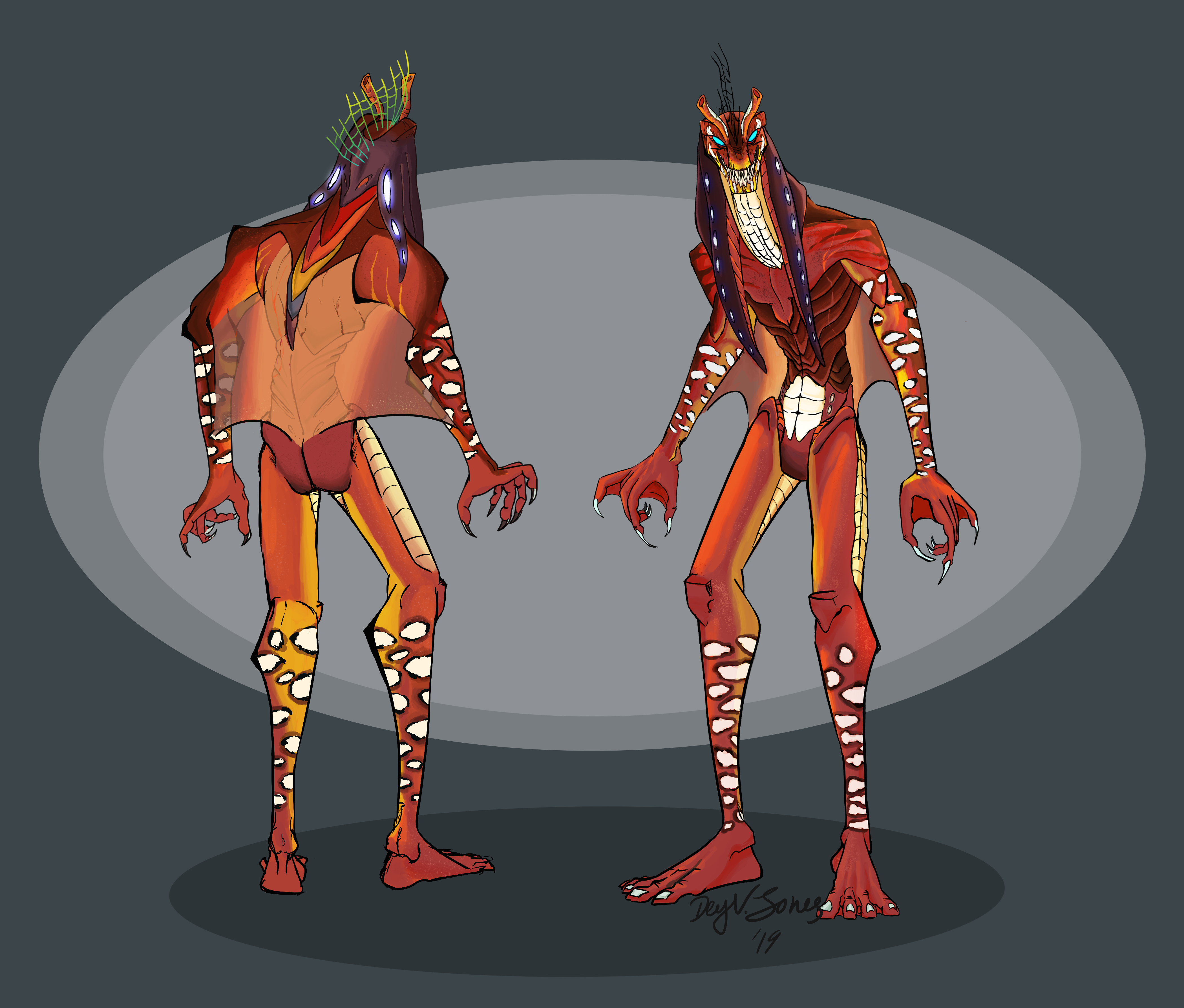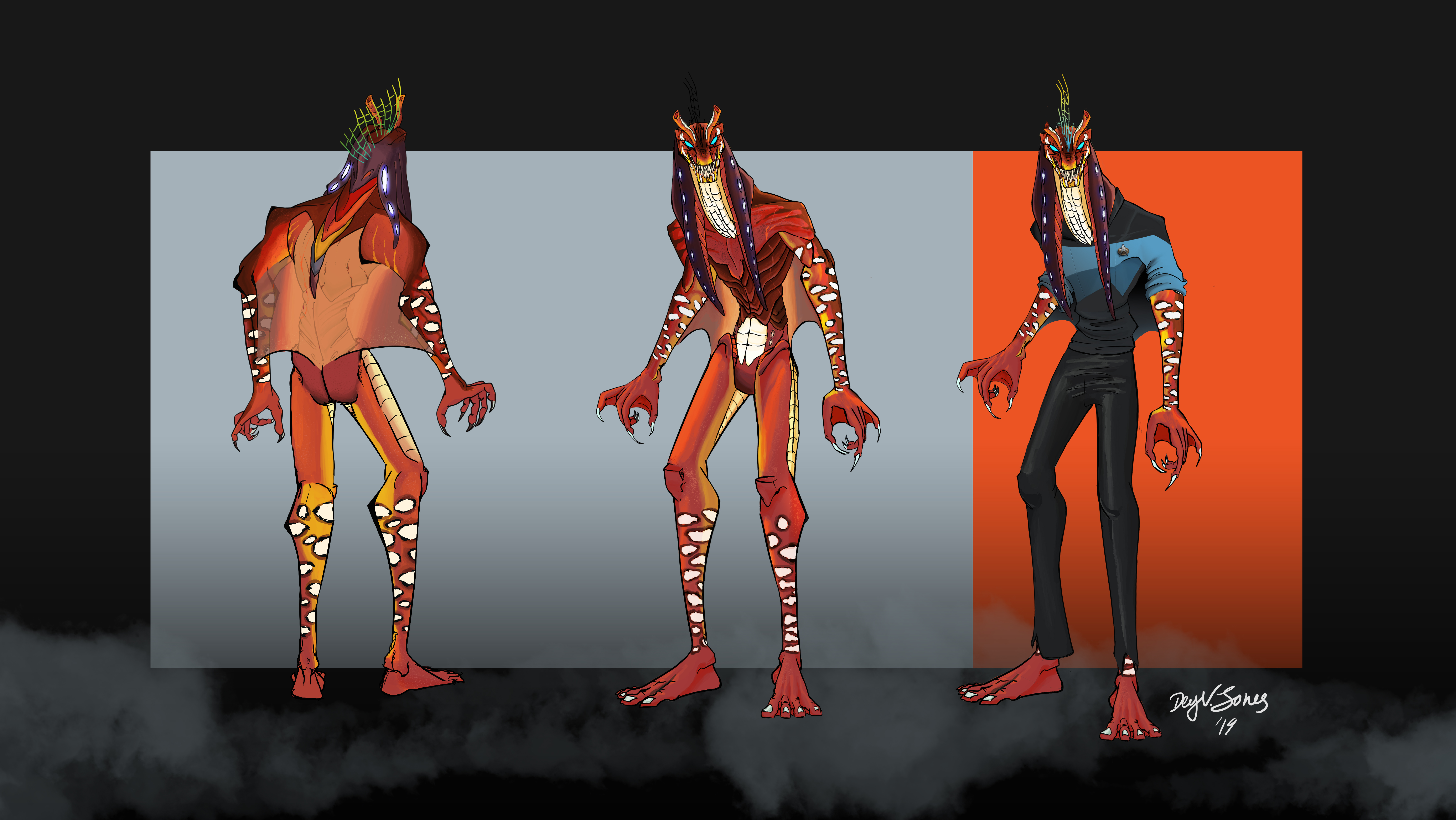Users: Damien.V..Jones.1 ,
Collaborators: None
Add User (Read/Write Access):
Add Collaborator (Split Stars):
Toggle Green/Red for Active/Inactive
Entire Only Content
Entire Only Content
The Nichibotsu (Sunset Eel People)
The Nichibotsu are a species of alien that resembles the Japanese Dragon Eel very closely, dawning identical spot patterns and vibrant color schemes. It is the reason for their name, Nichibotsu, or Sunset Eel. The Nichibotsu have the capability to navigate bodies of water with incredible ease, even in their evolved states. Primitive Nichibotsu dawned only a single elongated fin rather than two legs, a feature that has long been selected against over the years of colonization of their planet Inundatius.
Inundatius, similar to Neptune of our own solar system, is a world covered 98% by water; the only forms of land small islands where the Nichibotsu stalk their prey and reproduce, and vibrant coral reefs that span for thousands of miles. The patterns of the Nichibotsu resemble a specific region of coral reef, where the constant burning light of two sunsets on opposing horizons hit perfectly, rendering the water a fiery red year- round. This region experience nightfall only once a week, rendering all Nichibotsu vulnerable, as their camouflage has all but disappeared with the setting suns.
The water on this planet is incredibly acidic, resulting in a rather drastic change in the reproductive habits of those living in the planet’s extensive oceans. The reproductive ritual practiced by Nichibotsu is, with a lack of a better phrase, unconventional. Most of their people are endogenous until their first encounter with a potential partner. Once a Nichibotsu is in danger, on the verge of death, or enticed by another of its kind, the Nichibotsu body produces testosterone and estrogen depending on the partner that succeeds in dominating the other. A couple interested in mating will fight, until one reigns victorious. Nichibotsu who win these confrontations produce estrogen, while the party who forfeits produces testosterone, and either party assumes their respective roles.
Sexual Dimorphism is present in these scenarios; the Nichibotsu that is estrogen- rich dawns incredibly vibrant scales imitating the scheme of a Sunset, and spots, alerting any others that they are the victors of a confrontation. The individual that produces testosterone will dull in color after the ritual, as if intercourse drains them of their hues until the next mating season.
Likewise, if a Nichibotsu faces danger, they produce testosterone in order to boost the chemical reactions in their body to encourage muscle building and aggression. Often times, once the threat is neutralized, the individual retains testosterone for a maximum of thirty days. The Nichibotsu are a species that can change its “gender” depending on the situation. It is most likely an evolutionary custom that resulted in the Nichibotsu’s near extinction a few millennia ago, when there was a distinctive male and female population. A sudden drastic increase in acidity of the planet’s water as a result of a meteor shower containing chemicals that reacted to the plate’s ocean, killed off most of the primitive Nichibotsu males. The only survivors, and candidates for
reproduction, were Nichibotsu with dual genitals, and whose reproductive hormones weren’t overwhelmingly affected. The females of the primitive Nichibotsu lacked levels of estrogen to reproduce at a stable rate, thus forcing them to quickly draw closer and closer to possible extinction.
Other distinctive features of the Nichibotsu include their soft coral like crests, that resemble coral reef plants. These crests seem to grow more coral-like formations the older a Nichibotsu grows.
-By DV 9-19-2019



Download(s):
Star Trek Alien Design FINAL Uniform_7f09d935-148d-46e6-980f-2e87dd7476fd.jpg
Star Trek Alien Design FINAL_f3c104ff-ffd5-4bad-9a83-e08260cc6142.jpg
Star Trek-Nichibotsu FINAL_32b827b8-f052-41bf-842b-d384f330dead.jpg